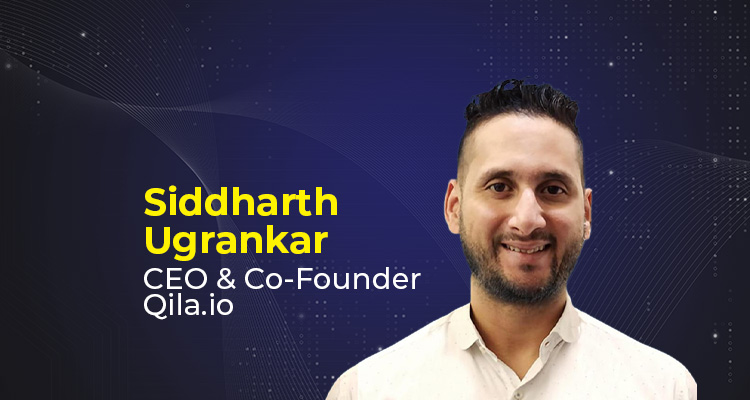What are the important accelerators driving increased tokenisation adoption in the world’s financial markets?
Token adoption is increasing because tokenisation tackles long-standing inefficiencies in capital markets directly. Conventional assets such as real estate, bonds, or private debt are usually illiquid, expensive to transact, and limited to institutional capital. Tokenisation makes fractional ownership possible to bring these assets within reach of a larger universe of investors. It enhances transparency using the immutable ledger of blockchain technology, reduces settlement times from days to effectively real-time, and reduces intermediary charges. Experimentation by industry leaders like Nasdaq and Goldman Sachs lends weight to it in the form of regulatory sanction and market maturity. As revenue growth sources, operational effectiveness, and increased trust are sought by institutions, tokenisation is turning into an evolution in the capital market infrastructure.
How are anti-money laundering (AML) and know-your-customer (KYC) regimes relevant to tokenised transactions?
AML and KYC systems are adapting to fit the tokenised transaction’s unique character. With tokenisation, digital identity and assets’ ownership may be verified using blockchain-based credentials, and auditability and transparency are enhanced. For example, the PrivaSea wallet by Qila allows sharing of verified credentials securely across institutions in an effort to minimise duplication while meeting regulatory compliance. Token transfers are trackable in real time to enable easier identification of suspicious activities compared to legacy systems. Regulators are as well encouraging the usage of standardised digital identity platforms and blockchain analytics platforms to track the source of funds. With an intersection of blockchain transparency and traditional compliance processes, AML and KYC systems are becoming efficient, robust, and scalable while ensuring tokenisation enhances, not compromises, regulatory management.
How is tokenisation able to introduce interoperability standards to be incorporated into already built-out financial ecosystems?
Tokenisation cannot exist in a vacuum; it has to coexist within the overall financial infrastructure. Interoperability standards come into play here. With standardised APIs, cross-chain protocols, and international frameworks such as ISO 20022 for messaging, tokenised assets are able to combine with banks and their systems, payment networks and payment rails, and trading systems. At Qila, we aim for a modular blockchain infrastructure to accommodate private and public network connectivity so institutions are never locked in by the vendor. Interoperability facilitates secondary market liquidity too, tokens are transferred effortlessly across multiple platforms, custodianships, and geographies. This combination ensures tokenisation neither upsets nor replaces legacy processes but incorporates transparency, convenience, and automation into trusted financial workflows. The outcome is accelerated adoption and easier conformance to regulatory and operating standards.
How will tokenisation and conventional securitisation processes impact the operating costs of banks?
Tokenisation is much less costly than traditional securitisation approaches. Under traditional systems, securitisation requires several intermediaries, lawyers, rating agencies, trustees, each contributing time and money to the process. Settlement may require days, imposing operational overhead. Under tokenisation, smart contracts facilitate many of these processes, decreasing reliance on intermediaries and shortening settlement time to virtual real-time. Operations are brought down in expenses by 20-40% in typical pilot projects, and increased transparency reduces the odds of disputes or penalty of non-compliance. Additionally, fractional ownership increases the investor base, raising liquidity without expensive awareness campaigns. Though initial integration imposes capital expenditure in blockchain infrastructure, platforms such as Qila.io’s BaaS-based tokenisation eliminates the massive setup charges and renders tokenisation less only efficient but even economical in the long run.
From the perspective of Qila, how does a Blockchain-as-a-Service (BaaS) framework ease the tokenisation process by Financial institutions lacking in-house blockchain expertise?
For many financial institutions, developing blockchain infrastructure in-house is costly and technically formidable. The BaaS approach of Qila removes these impediments by providing pre-configured blockchain networks (ARK, ARK Plus) and enterprise wallets (PrivaSea) as turnkey solutions. Institutions may tokenise assets, issue smart contracts, and comply with regulatory requirements without in-depth blockchain knowledge. Our no-code and low-code environments reduce system integrations through APIs to ease adoption by IT groups with little retraining. Besides technology, Qila offers compliance-validated frameworks so that the solutions are in accordance with AML, KYC, and regulatory standards. This way, financial institutions may concentrate on the application cases, real estate property, bond issues, supply chains, while infrastructure, scalability, and security are covered by Qila. Time-to-market and pilots are fast-tracked.
What are the largest technical and regulatory challenges faced by Qila in tokenising pilot projects with institutions and how might these be overcome?
The two significant obstacles are regulatory ambiguity and technical interoperability. Most regulators are still establishing digital assets frameworks, making institutions hesitant. To remedy this, Qila works closely with regulators and ensures their solutions adhere to compliance best practices, secure KYC credentials, audit trails, and permissioned networks in conformance with data residency requirements. Technically, interoperability across multiple blockchains and traditional legacy systems is an issue. Through their modular architecture and their API-first design, Qila achieves seamless integration while preventing vendor lock-in. By providing pilot sandboxes, institutions may experiment in safety, develop regulator confidence, and incrementally scale. Through clear models of governance and inter-industry cooperation, these obstacles may be methodically eliminated and mainstream adoption opened up.
How does Qila achieve security, scalability, and regulatory compliance while facilitating tokenisation in varied asset classes?
Qila tackles tokenisation on three pillars: security, scalability, and compliance. Security is achieved by virtue of permissioned blockchain networks, encryption, and identity-based access controls to exclude unauthorised usage. Scalability is obtained by virtue of ARK Plus, allowing multi-tenanted deployments and cloud hosting in Asia, North America, and Europe to let institutions scale globally while remaining highly performant. Compliance is built in through features such as verifiable KYC credentials in the PrivaSea wallet, immutable audit trails to regulators, and conformance to global standards such as ISO 20022. By crafting industry-specific templates for real estate, bonds, or supply chain assets, Qila renders tokenisation both flexible but robust. The integration enables businesses to innovate with assurance and stay in compliance and ahead-of-the-curve positions in highly regulated marketplaces.
Enjoyed this interview? Now, imagine yours. Write to:
editor@thefoundermedia.com




